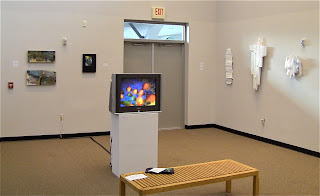There is a beautiful poem by Jack Gilbert called "Alone." It has got to be one of the most moving pieces of writing I've ever come across. I guess it's ok if I post it here:
Alone
Jack Gilbert
I never thought Michiko would come back
after she died. But if she did, I knew
it would be as a lady in a long white dress.
It is strange that she has returned
as somebody’s dalmatian. I meet
the man walking her on a leash
almost every week. He says good morning
and I stoop down to calm her. He said
once that she was never like that with
other people. Sometimes she is tethered
on the lawn when I go by. If nobody
is around, I sit on the grass. When she
finally quiets, she puts her head in my lap
and we watch each other’s eyes as I whisper
in her soft ears. She cares nothing about
the mystery. She likes it best when
I touch her head and tell her small
things about my days and our friends.
That makes her happy the way it always did.
The poem is wonderful for many reasons but the sentence that always (and I've read it so many times) catches me off-guard, almost physically moves me, is "She cares nothing about the mystery." All of life, all of existence is expressed in that one sentence, deepened especially by the context in which it appears.
There is an awareness of "the mystery," the fact of its presence is understood yet Gilbert doesn't try to shine his flashlight right at it, he is wise enough to know that he should better just leave it alone and instead focus on the tangible things, the grass, the dog's ears and eyes, the moment, the gentleness, the love.
The other night, I was tired yet lucid (don't you, too, love that), and as I took some notes, wrote down some unconnected lines which seemed somehow relevant, I started reducing my hand writing to pure form. Content became unimportant, and it was interesting to simply watch the way the lines became longer, more sweeping, almost melodic.
I decided to go to a new page and fill it up with this new type of void writing - from top to bottom, and then new lines on top of old ones.
There are now patterns on the page that have nothing and everything to do with writing. If we take them strictly for what they are, we'll see organic rhythms, landscapes - unlike anything else that exists in the world. We could make ten of these and spend a long time looking at all of them, comparing them, contrasting them, letting the visual material speak to us. There would never be two that are the same. They contain information on the materials used and the hand that executed them - how tired I was that night, how quickly I made them etc.
I think that anything - anything natural, any matter, anything which contains atoms, anything that IS - will have its very own inherent melody that you can tap into. Could it be possible to, by being in an open, organic mood when assembling, make anything ring true according to its original "rightness?"
I can't see through these things, really. It just so happened that the thoughts I just articulated all of a sudden stood there, clearly and like an epiphany, during that lucid night. Maybe they have something to do with the wood surface studies I showed in the exhibition last week. I feel that they, too, have a natural rhythm to them, an original rightness.
Of all the new experiments I've tried in the last months, the wood surfaces still continue to baffle me myself the most. I never get tired of looking at them. A rewarding experience, to be the artist yet to be able to look at the own work with somebody else's eyes.
Here are some detailed images I'd like to share.
Wood Surface Study #1
Wood Surface Study #3
Wood Surface Study #2
Study #3 - detail
Study #1 - detail
Study #3 - detail
I think I could say more, but I'm a slow writer, and maybe I should just let them speak for themselves.
Until soon.
P.



























